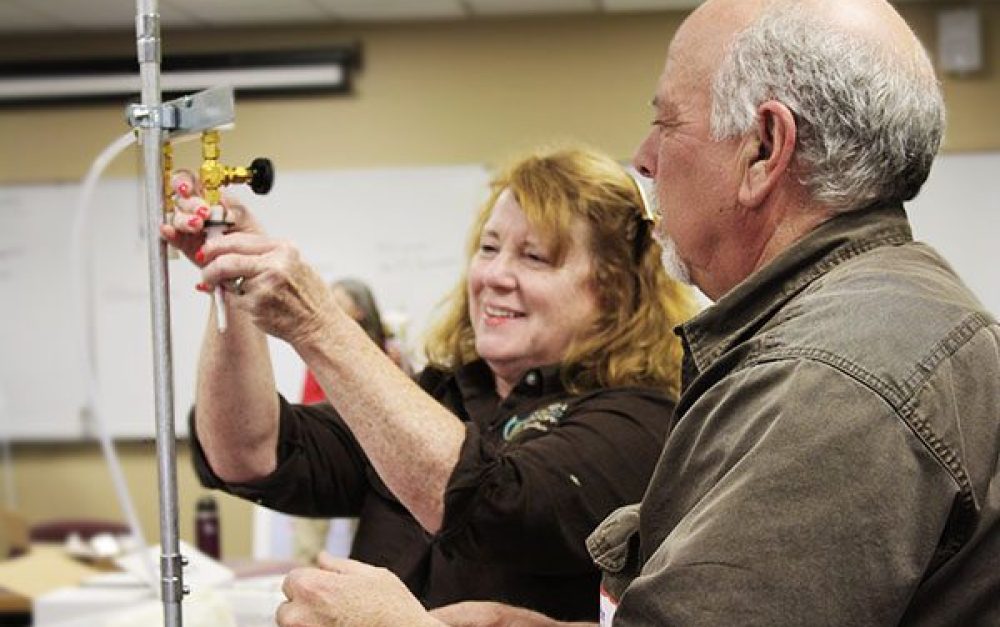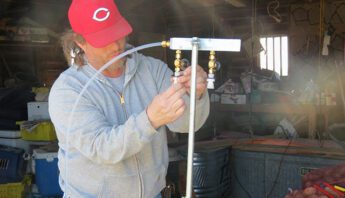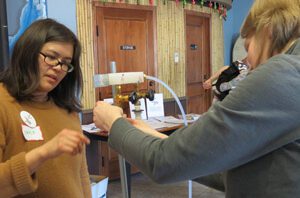Are you ready for spring? For most of us, that means house cleaning and a welcome wardrobe change. But for farmers and other rural residents it means hard work and often, bracing for the impact of pesticide drift. It means waiting to see if their crops will be damaged, and guessing which days they'll have to keep the kids indoors.
PAN is ready, and so are more rural residents. Late last month I traveled with my colleagues Emily Marquez and Lex Horan through Iowa and Minnesota certifying people to use a simple tool to monitor pesticide drift. We won't be able to stop the drift from coming this spring, but we'll be gathering important, on-the-ground data to help strengthen state and federal pesticide rules.
PAN provides Drift Catcher technology to rural residents who are concerned that their health or livelihoods are being negatively impacted by pesticide drift. The Drift Catcher tool is used to take air samples throughout the pesticide spray season, allowing PAN to measure the type and concentration of pesticides that drift off fields and into the homes, farms and schools where participants are sampling.
Ready to sample
This year PAN is working with 30 residents in Iowa and Minnesota, newly trained to use Drift Catchers. Each participant is a member of one of our partner organizations: Practical Farmers of Iowa; the Women, Food and Agriculture Network; the White Earth Land Recovery Project; and the Toxic Taters Coalition. We're working with these organizations to take air samples and to use the results to build momentum for policy change.
The Drift Catcher training is a day-long event — a chance for Midwesterners to come together to share their experiences dealing with pesticide drift and, most importantly, a chance for PAN staff to teach participants how to use the Drift Catcher equipment.
While it was designed to be used by non-scientists, the Drift Catcher still comes with a complicated set of instructions. In addition to demonstrating how to use each piece of the air monitoring kit, the training covers the bigger picture questions — the when, where and why of taking air samples.
My favorite part comes after the group training, when Emily, Lex and I visit each Drift Catcher site and certify our participants. We help people decide where to place the equipment and test their ability to work the Drift Catcher. To be certified, each person must be able to properly operate the tool and answer a series of questions about its use.
Turning data into action
Since last season's data collection, PAN has been working with our allies to start a public conversation about pesticide drift in the Midwest. We're using the data collected in the past two years to educate decisionmakers and call attention to the issue.
We've been on panels at farmer conferences, met with state agencies, and explored legislative opportunities. We also helped launch the Toxic Taters Campaign.
Once we've collected enough data in Iowa and Minnesota, we'll compile it all into a technical report and release it publicly, like we did with the report Pesticide Drift Monitoring in Minnesota. In the past, these reports have been invaluable for our efforts to win buffer zones and other regulations that protect farms and families.
I look forward to a spring when the air is clean and there is no pesticide drift to catch. Until then, you can find more information about our Drift Catcher program at www.panna.org/drift.








